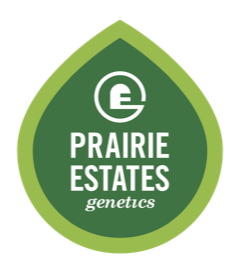In fall 2011, my husband and I purchased a retiree’s small herd, which was mostly A.I.-sired. We added them to his family’s original herd, which was mostly herd-bull sired. None of the cows were registered, but all were Holstein.
A few months later, after we took over management, we sold the last remaining herd bull and were officially 100 percent A.I. Up to that point, my husband had been doing most of the breeding using mostly proven sires that were near the middle of the list, for budgetary reasons. However, several of the heifers in the purchased herd were sired by top proven bulls, and as we quickly saw the impact that good sires had, we committed to using top bulls.
We took the next step and dipped our toes into both registered Holsteins and genomics in 2013 when we registered and genomic tested three of our cow families. I’m a big fan of numbers and data, so I was infatuated with this new tool to say the least.
Early lessons
Right away it was clear, as expected, that the top sires’ daughters had higher numbers than the middle-of-the-road sires’ daughters, but also as expected, those daughters were not always better cows. Obviously, any breeder will tell you that environment and management play a huge role in an animal’s development, but genetics do also play a part. Genomics, from the start, told us things about our animals that we couldn’t physically see. We learned, for example, that our original herd contained haplotypes affecting fertility that were likely widespread due to long-term use of the herd bulls that must have transmitted them. We also learned from genomic SCS values that our high herd somatic cell count was likely affected, partially, by genetics.
Our approach
To date we still have only registered daughters from those four original cow families. However, in 2014 we began using inventory tags with 840 identification numbers and using Basic ID for all our heifers. This allows us to genomic test any heifer through Holstein USA and to use the Enlight system for managing our genomic and parent average data. We have continued to select a variety of calves for genomic testing from both the registered and Basic IDed families. We generally test what we consider to be top calves, but that may be based on our opinion of the sire, dam or the calf herself, depending on the situation.
General benefits
It’s important to note the obvious, I think. No amount of data, no matter how accurate, is valuable if you don’t use it. We have used genomic data for specific matings for special animals and for identifying top genetic females, but the real value for us has not been the specific, but the general. Based on our earliest tests, we stopped using bulls carrying known haplotypes affecting fertility, and we are seeing improving pregnancy rates as well as very few haplotypes in recent genomic results. We have also improved both our actual somatic cell count and our genomic somatic cell scores through a combination of breeding, culling and management changes. Genetics are just one piece of the puzzle.
As we continue to test, and as new traits become available, we feel genomic testing enables us to adjust our breeding and our goals to accelerate our herd’s genetic progress. ![]()

-
Jennifer Heim
- Dairy Producer and Engineer
- Easton, Kansas
- Email Jennifer Heim








